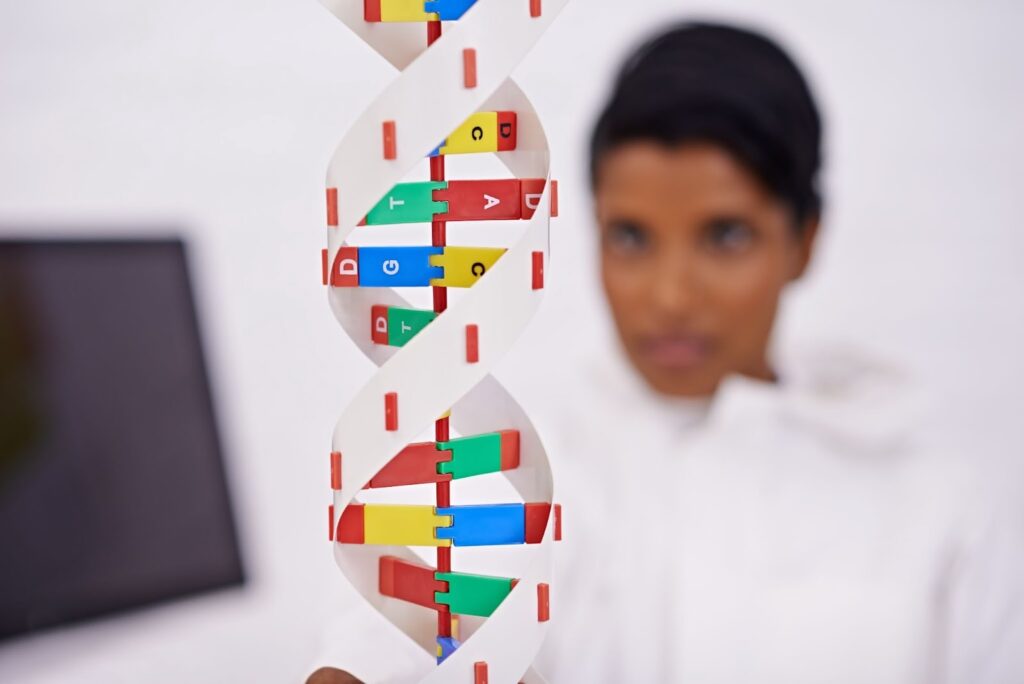
DNA testing has become a tool for uncovering ancestry, health insights, and genetic traits. Many people order kits with curiosity but find the results confusing at first glance. Reports often include percentages, health indicators, and complex scientific terms. Understanding how to read your DNA test results gives you clarity and helps you apply the insights meaningfully.
DNA Test Results Explained
DNA test results provide a breakdown of your genetic information. They reveal ancestry percentages, health markers, and inherited traits. Companies analyze minor variations in your DNA, comparing them with global databases. This process allows them to estimate where your ancestors lived and highlight genetic predispositions.
What DNA Testing Really Measures
A DNA test measures slight variations in your genetic code called SNPs, or single-nucleotide polymorphisms. These markers act as signposts, pointing to ancestral and health patterns. Companies compare your SNPs to reference populations to create your report. That means results are based on probabilities, not certainties. For example, if your DNA resembles Northern European markers, you may see a percentage linked to that region. Understanding this shows that DNA results are estimates, not absolute truths.
The Role of Reference Populations
Reference populations are groups of people with known genetic backgrounds used for comparison. Your DNA is analyzed against these groups to generate ancestry percentages. The size and diversity of a company’s database determine the detail and accuracy of results. Smaller databases may miss rarer ancestries or underrepresent specific populations. As databases grow, results become sharper and may change over time. That is why updates from testing services often lead to revised ancestry breakdowns.
Why Percentages Differ Across Platforms
Ancestry percentages can vary between DNA testing companies. Each service uses unique reference groups, algorithms, and databases to interpret your DNA. One company might list you as 30% Southern European, while another shows 40%. These differences do not mean your DNA changed, but the interpretation differs. Results are shaped by the quality of the company’s population samples. Accepting this variability helps you read your results with realistic expectations.
Reading Ancestry DNA Test Results
Ancestry results show the regional makeup of your DNA, often with colorful maps and percentages. They provide insight into where your genetic ancestors lived. These estimates give a broad view rather than an exact cultural identity. Learning to read ancestry DNA results helps you make sense of family roots and supports personal investigations into heritage and private investigations focused on identity.
Breaking Down Regional Percentages
Percentages reflect the probability that a segment of your DNA comes from a specific region. A higher percentage indicates closer genetic ties, while smaller ones may indicate distant ancestry. For example, a five percent East Asian result could reflect migration patterns far back in your family history. Percentages are influenced by overlapping genetic signatures across populations. Knowing this helps prevent overinterpreting small percentages. These numbers show patterns, not precise cultural definitions.
Understanding Genetic Matches and Relatives
DNA testing often identifies relatives who share segments of DNA with you. The more DNA you share, the closer the relationship. First cousins will share large sections of DNA, while distant cousins share smaller ones. These matches help people build family trees and confirm genealogical research. Some platforms allow you to contact matches directly, which can also support marital investigations in cases involving paternity or family disputes. Connecting with relatives can bring new insights and personal connections beyond the report.
Ethnicity Estimates vs. Genetic Reality
Ethnicity estimates reflect statistical models, not cultural or social identities. Having 20% Irish ancestry in your DNA does not mean you grew up in Irish traditions. These results describe biological ancestry, not heritage shaped by culture or environment. For example, people with strong family traditions may find their DNA shows diverse regions instead of one homeland. It does not invalidate identity but highlights genetic diversity. Understanding this distinction avoids confusing DNA data with cultural heritage.

Historical Migration and Overlaps
Many populations share DNA because of migration and intermarriage over centuries. For example, Viking expansions left Scandinavian DNA traces in Britain. These overlaps often cause results to include unexpected regions. Boundaries on a DNA map rarely match modern political borders. Instead, they reflect ancient population movements. This context helps explain why ancestry reports often surprise test-takers.
Health Insights from DNA Test Results
DNA testing can reveal predispositions to specific health conditions and inherited traits. These results are not diagnoses but risk indicators. They can guide lifestyle decisions and family planning. Reading them correctly helps you apply health knowledge responsibly.
Genetic Predispositions Explained
Predispositions indicate that you may have an increased likelihood of certain conditions. That does not mean you will develop them, but that your genetic makeup interacts with the environment differently. For example, you may have higher risk markers for diabetes, but lifestyle factors like diet and activity still play a stronger role. Understanding predispositions can motivate preventive actions. Doctors often recommend screenings when genetic risks are identified. Interpreting these results as guidance rather than certainty makes them valuable.
Carrier Status and Family Planning
Carrier results identify if you carry one copy of a gene linked to an inherited condition. Carriers usually do not develop symptoms themselves. However, if both parents are carriers, their child may inherit the condition. This information supports informed family planning decisions. Many couples use DNA tests before having children. Discussing results with a genetic counselor ensures responsible interpretation.
Traits Linked to Your DNA
Trait reports show genetic influences on hair color, eye shape, and lactose tolerance. These insights may seem less important than health results, but they demonstrate how genetics influences daily life. For example, you might learn why you dislike cilantro or why you sunburn easily. Trait information makes genetics more relatable and easier to understand. It also helps build curiosity about the broader role of DNA in shaping identity. Reading these results adds depth to the overall testing experience.
Key Terms in DNA Test Results
DNA reports often use technical terms that confuse beginners. Learning these terms makes results easier to interpret. With basic knowledge, you can read your report more confidently. Each word reflects a key part of how the science works.
SNPs and Genetic Markers
SNPs are slight variations in DNA that serve as markers for ancestry and traits. Most DNA tests analyze hundreds of thousands of these variations. They are compared to databases to create your results. SNPs are the foundation of both ancestry and health reports. Without them, companies could not identify genetic patterns. Knowing this term helps explain how your DNA becomes readable data.

Haplogroups and Lineage
Haplogroups trace your maternal or paternal lines back thousands of years. Mitochondrial DNA traces maternal ancestry, while Y-DNA traces paternal ancestry. These results show ancient migration paths of your genetic ancestors. Haplogroups provide context beyond recent family history. They often reveal surprising global connections. Understanding haplogroups highlights the depth of human ancestry.
Chromosome Mapping Explained
Some DNA services show ancestry on a chromosome map. This highlights which regions of your chromosomes contain ancestry from different populations. It often reveals mixed heritage within the same chromosome. Chromosome maps make ancestry visible in a more detailed way. They add clarity beyond percentages and maps. Reading these maps requires patience, but they offer a fascinating look at genetic structure.
Accuracy and Limits of DNA Test Results
DNA test results are advanced but not flawless. They depend on current databases, reference samples, and algorithms. Results can change over time as science improves. Knowing these limits prevents misinterpretation of your DNA story.
Why Results Change Over Time
As testing companies expand their databases, they refine results. It can change your ancestry percentages without altering your DNA. New populations are added, making estimates more accurate. For example, a general “European” category may later divide into regional subgroups. Updates reflect better science, not errors in past reports. For those involved in legal investigations, re-checking results after updates ensures the most credible data is used.
Database Size and Diversity
The accuracy of results depends heavily on database size. Larger, more diverse databases provide sharper and broader matches. Smaller ones may underrepresent global populations, often affecting people from regions with fewer test participants. Choosing a company with an extensive, diverse database increases accuracy and ensures better representation across under-sampled populations.
Environment vs. Genetics
Health outcomes often depend more on the environment than genetics. For instance, genes may predispose you to heart disease, but diet and exercise remain stronger factors. DNA results cannot predict outcomes with certainty. They highlight areas to watch rather than define your future. Combining genetic insights with healthy habits makes the most sense. This perspective helps balance DNA results with everyday choices.
Next Steps After DNA Test Results
DNA results become more valuable when applied to daily life. They can shape personal choices, health planning, and family connections. What you do next determines their impact. Knowing your options helps you move forward with clarity.
Connecting With Relatives
Many DNA platforms suggest genetic relatives based on shared DNA. These matches allow you to connect with living family members. Some people discover cousins or half-siblings they never knew existed. Reaching out can expand your sense of family and identity. Matches also confirm relationships in genealogical research. Connecting with relatives is one of the most rewarding outcomes of DNA testing.
Building a Family Tree
Combining DNA results with historical records strengthens family trees. Matches help confirm uncertain branches and resolve gaps in documentation. For example, shared DNA segments may validate a suspected ancestral connection, making genealogy more accurate and complete. Many users use DNA results as the foundation of their family history research. Adding DNA evidence to traditional research makes the story of ancestry more reliable.
Applying Results to Health Choices
Health-related DNA results can guide practical choices. Predispositions may encourage screenings, diet changes, or lifestyle adjustments. Doctors can use genetic reports to suggest proactive care. For example, higher risks for certain cancers might prompt earlier checkups. Using results constructively allows you to improve the quality of life. That is where DNA testing makes a lasting impact.
Turn Your DNA Test Results into Real Insight
DNA test results are more than charts and numbers; they are a living record of who you are and where you come from. The data becomes meaningful when you use it to guide your health, strengthen family ties, or explore heritage. Every insight opens a chance to act with clarity and purpose. Start treating your DNA results as a resource for growth, not just a report.
Your DNA story doesn’t end with your results. Continue the journey with expert insights on the Arkansas Investigations blog.

